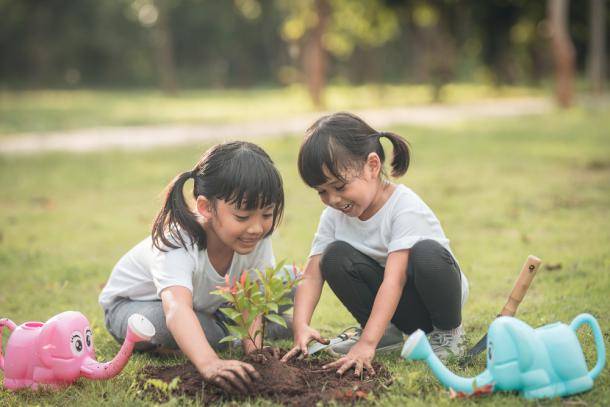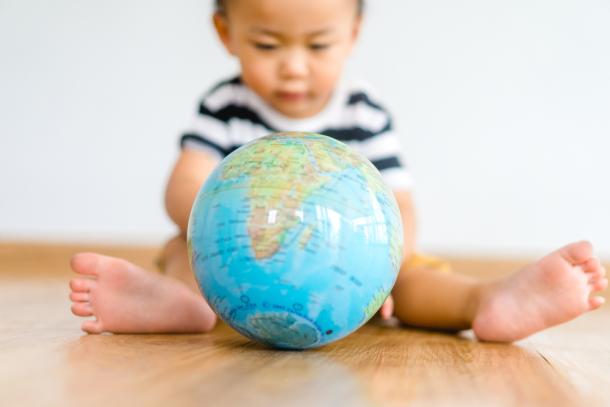Idea
Seeds of change: Embracing climate change education for young learners in Asia-Pacific

Early access to comprehensive climate change education can boost their climate-friendly habits and lead them to adopt lifestyles that adapt to and mitigate climate change for the long term.
Climate change is intensifying. Beating a record set only several years ago, 2023 has been logged as the warmest year on record globally since the mid-nineteenth century.
In the Asia-Pacific region, where many populations are concentrated in coastal cities and low-lying territories—major industries often comprise fisheries and agriculture—communities can be especially susceptible to the heightened risk.
Something must be done, and done swiftly, if the region is to meet this looming challenge successfully.
Among the many ways governments, businesses and civil society are attempting to stem a future crisis, climate change education is proving one of the most promising approaches to raise public awareness and understanding of climate change, and accelerate the pursuit of climate solutions for a sustainable future.
It is thus encouraging that at the Asia-Pacific Regional Climate Weeks in 2023, education was recognized as one of the most promising means toward spurring sustainability transformation, with children and youth engagement high on the agenda.
Similarly, at the most recent UN Climate Change Conference (COP28) in Dubai (United Arab Emirates), 39 partner countries of the Greening Education Partnership endorsed the Declaration on Climate Change and Education, thereby pledging to strengthen learners' capacity to adapt to current effects of climate change, as well as to mitigate its worsening.
What is climate change education?
Climate change is much more than an environmental issue: it has social and economic implications for human development, among them poverty, inequality and injustice.
In recognizing this, climate change education aims to cultivate knowledge, skills, values and attitudes that will help individuals and societies to function as resilient ‘change agents’ for climate adaptation, mitigation and ultimately, sustainability.
The bicycle model by Cantell et al. (2019) reflects the broad scope and interconnected elements of climate change while emphasizing the action-oriented response represented by education.
Holistic climate change education seeks to deepen learners' understanding of the causes and impacts of climate change by fostering practical application, motivation and active participation of learners in climate change mitigation and adaptation—ultimately compelling individuals to becoming lifelong change agents.
Why teach climate change in early childhood?
Young children in Asia-Pacific are among the most vulnerable to climate change. Early access to comprehensive climate change education boosts their climate-friendly habits and their adoption of lifestyles that adapt to and mitigate climate change for the long term.
Climate-responsive early childhood care and education (ECCE) should aim to strengthen children’s resilience and prepare them to be agents of positive change—for the present and the future.
The Tashkent Declaration and Commitments to Action for Transforming Early Childhood Care and Education (2022) explicitly emphasizes the imperative for UNESCO Member States to promote climate-sensitive ECCE. UNESCO has also recently highlighted the need to develop a climate-responsive and climate-smart education system for Asia and the Pacific.
Nevertheless, ECCE has yet to be included as a key element in Asia-Pacific climate adaptation and mitigation plans. What would embedding climate change education within ECCE look like?

Empowering early childhood instructors to teach climate change with confidence
Climate change education generally starts at the primary level, where it focuses on empowering youth as change agents (GEM, 2022).
To implement effective early childhood climate change education in Asia-Pacific, competent ECCE teachers and educators are key.
At present, ECCE instructors in the region are neither adequately prepared nor well trained. For example, while 83 per cent of child development workers in the Philippines believe in teaching climate change to young children, less than 30 per cent express readiness in knowledge and skills to effectively do so (ARNEC, 2023).
Given this context, it is imperative to enhance the capacity of the early childhood education workforce in Asia-Pacific by:
- Providing teachers with pre-service and in-service training which addresses their learning needs to teach climate change and provides opportunities to exchange and share their teaching experiences
Quality training builds a community of practice and equips teachers with the knowledge, skills, values and attitudes required to understand and address the impacts of climate change. Additionally, it introduces effective pedagogical strategies, developing teacher skills to holistically engage learners. Recommended pedagogies from research and practices include action and activist learning, art-based inquiry and nature-based learning. - Incorporating social-emotional learning into the training
Social-emotional learning is crucial to prevent teachers and children from developing climate change anxiety and other distressing emotions linked to their increasing awareness of the climate crisis. Since climate change and environmental degradation have adverse impacts on all areas of children’s psychological well-being in Asia-Pacific—as described in the Nurturing Care Framework—this training can lessen repercussions on children’s mental health. - Providing teachers with quality, context-specific teaching and learning materials and ensuring inclusive access for uninterrupted learning during school closures
Localizing teaching and learning materials to climate change impacts which are specific to a learner’s city and country builds contextual knowledge and enhances learner’s experience with climate change. It makes climate change education ‘more authentic and relevant to specific situations and helps to find local, realistic, and affordable solutions for adaptation.’ The Indonesian Local Content Curriculum provides a good example: when preparing to integrate disaster risk reduction topics and themes into different disciplines across primary and secondary school levels, educators first analysed the community’s local social, cultural and natural needs.
Equipping teachers with comprehensive climate change education training that integrates social-emotional learning, context-specific educational material, and fostering community collaboration are imperative strategies to empower educators to effectively impart climate change education; nurture student’s socio-emotional well-being; ensure inclusive learning; and deepen commitment to sustainable practices.
If we implement such strategies at scale in Asia-Pacific, a generation of informed and resilient individuals will be better prepared to address the challenges of our changing climate. We must plant the seeds of climate action in early childhood education today for the sake of everyone’s sustainable future.
Research for this article was contributed by Yining Jia, an intern supporting the work of the Inclusive & Equitable Learning Team under the Education Section of the UNESCO Regional Office in Bangkok.
This is a lightly adapted version of an article which first appeared on the GPE Education for All blog on 8 February 2024.
Click here for more information on UNESCO’s work in fostering climate change education.
#EarlyChildhoodCare&Education #EducationForSustainableDevelopment
More from UNESCO Bangkok
Share
About the authors

Catherine Wilczek supports the Asia-Pacific programme at UNESCO Regional Office in Bangkok on Inclusive Education (IE), primarily on children with disabilities and vulnerable groups. She also facilitates the activities of the Disability-Inclusive Education in Asia-Pacific Working Group. She earned her Bachelor’s and Master’s degrees in International Business from Queensland University of Technology (QUT), Australia.









